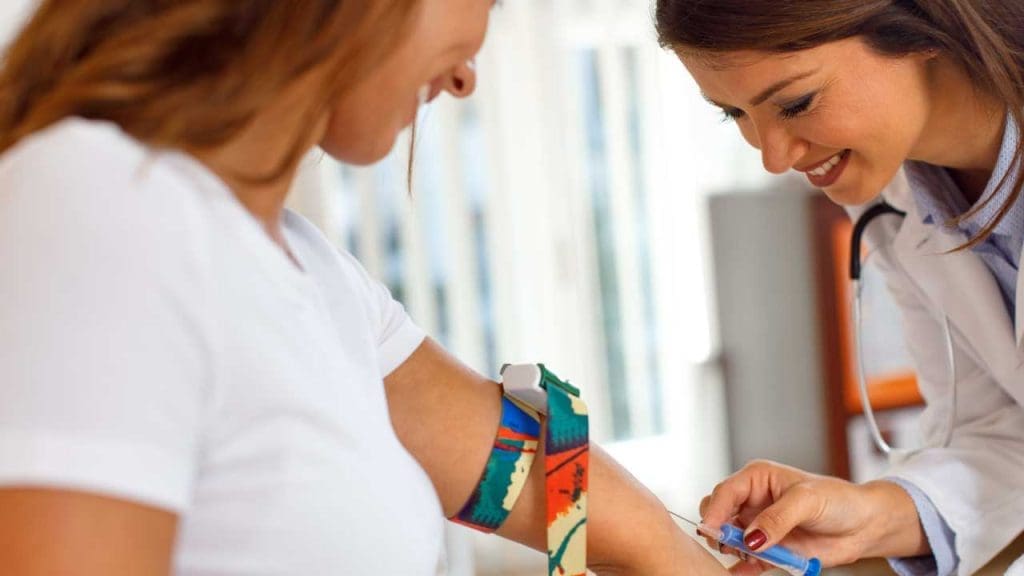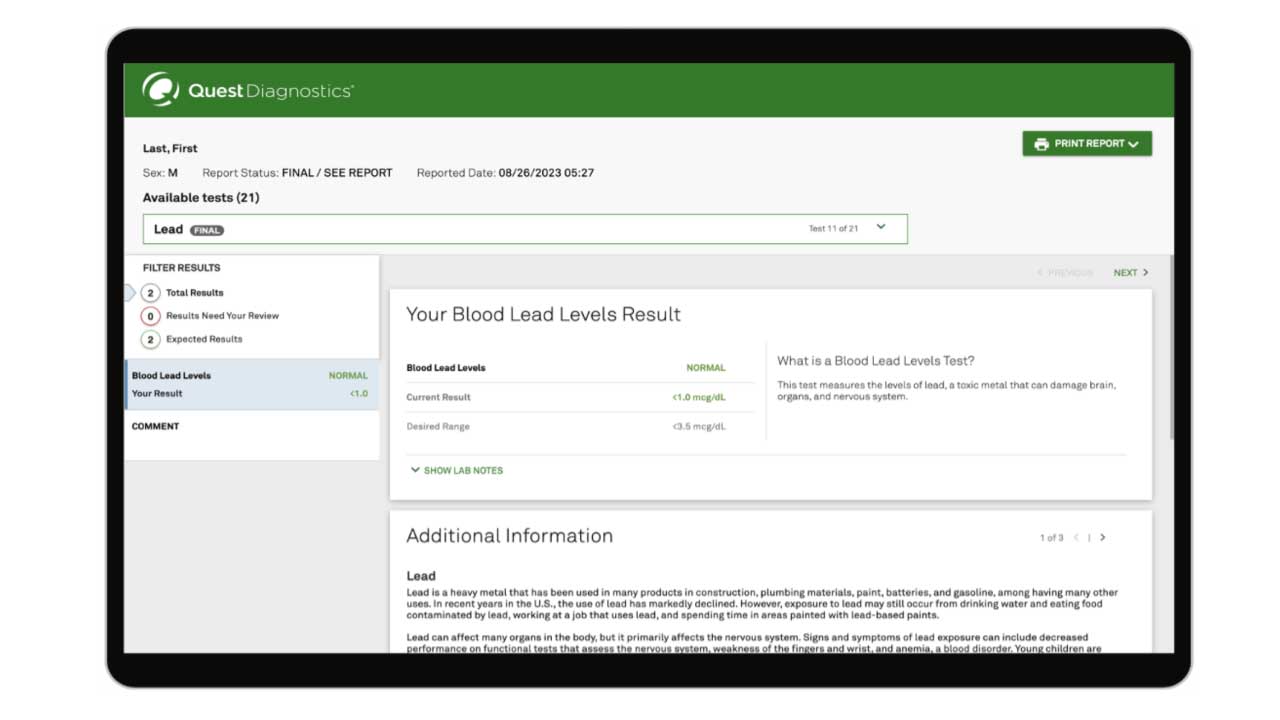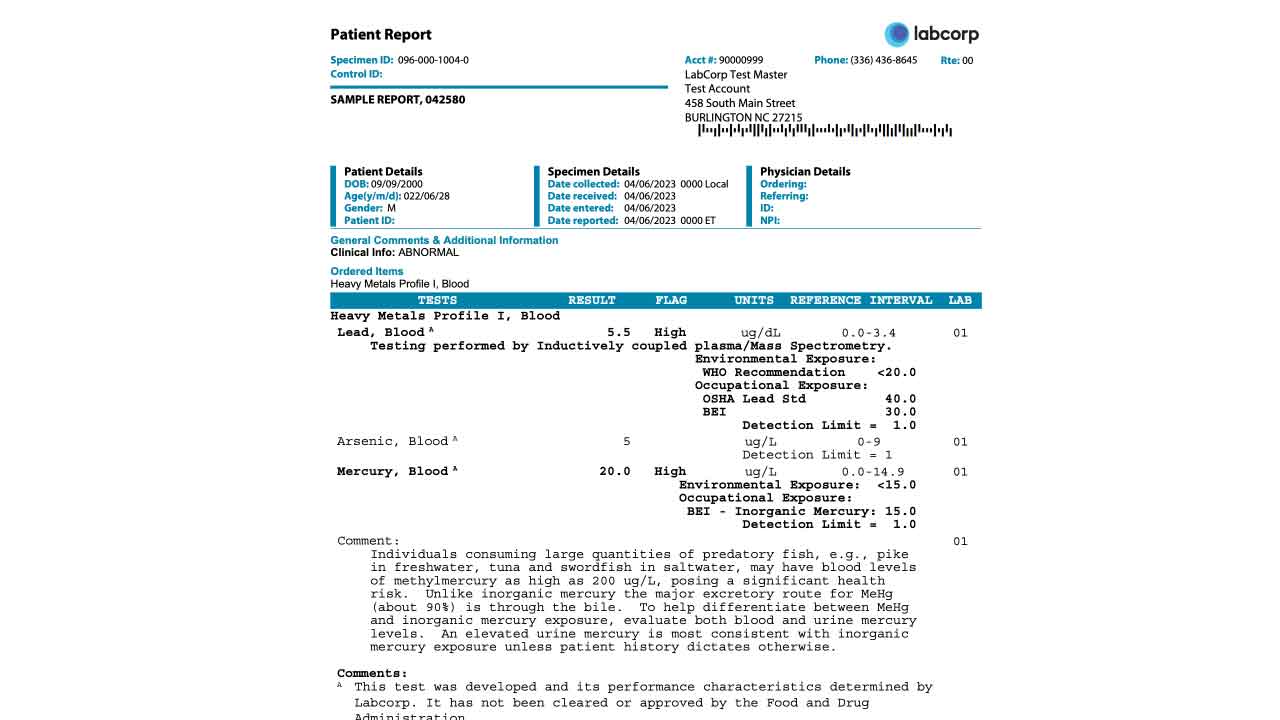As parents, our top priority is keeping our children safe and healthy. But what if something invisible, something you can’t taste or smell, was putting your family at risk? Lead exposure is one such hidden danger, and it’s more common than many people realize. Even though lead poisoning has declined significantly over the years, it remains a serious concern in certain communities—especially for young children and expectant mothers. A blood lead test is crucial for detecting lead exposure, especially in children and pregnant women. Early detection allows for timely action to reduce exposure and prevent long-term health effects.
So, how do you know if your family is at risk? In this guide, we’ll break down everything you need to know about lead exposure, its dangers, and how you can protect your family.
Quick Guide
Disclaimer: This information is based on research and is accurate to the best of our knowledge at the time of publication. Please note that the writer has not personally used or tested these products.
What is Lead Poisoning, and Why Should You Worry?
Lead is a toxic heavy metal that can accumulate in the body over time. It can be ingested, inhaled, or absorbed through the skin, and once it enters the bloodstream, it can cause serious health issues—especially in children whose developing brains and nervous systems are more vulnerable.
For pregnant women, lead exposure can lead to complications like miscarriage, premature birth, or developmental issues in their babies. And for young children, even small amounts of lead can result in learning disabilities, lower IQ, and behavioral problems.
Where Does Lead Exposure Come From?
Even though lead-based paint was banned in the U.S. in 1978, it still lingers in older homes. But that’s not the only source of lead exposure. Here are some of the most common ways families come into contact with lead:
- Old Paint – Peeling or chipping lead-based paint can create toxic dust that settles on floors and surfaces where children play.
- Soil – Lead from old paint, gasoline, and industrial sites can contaminate the soil in your yard or playgrounds.
- Water – Aging plumbing systems with lead pipes can leach lead into drinking water.
- Toys & Counterfeit Goods – Imported toys, jewelry, and even some cosmetics may contain unsafe levels of lead.
- Occupational Exposure – If someone in your household works in construction, battery manufacturing, or certain industrial jobs, they may unknowingly bring lead dust home.
Who Should Get Tested for Lead Exposure?
While lead poisoning can affect anyone, certain groups are at a higher risk, including:
- Children between 9 months and 6 years old (especially those living in homes built before 1978)
- Pregnant and breastfeeding women
- Families living in areas with known lead contamination
- People with jobs or hobbies that involve working with lead (e.g., construction, stained glass making, or pottery)
- Immigrants or refugees moving from countries with fewer lead regulations
If you or your child falls into any of these categories, a blood lead test is a smart precaution.
How Does a Blood Lead Test Work?
A blood lead test is the most reliable way to determine if you or your child has been exposed to lead. Here’s how it works:
- A blood sample is taken—usually from a vein in the arm.
- The sample is analyzed to measure the amount of lead present.
- Results are reviewed to determine if further action is needed.
No special preparation is required for the test, and it’s a quick and straightforward process.

Where Can You Get a Blood Lead Test?
You can get tested at various locations, including:
- Your doctor’s office
- Local health departments
- Community health centers
- Lab testing services like Quest and LabCorp
- At-home testing kits (such as the Doctor’s Data Heavy Metals Toxicity Test)
Recommended Tests
Personalabs Lead Level
About the test
The Personalabs Lead Level Blood Test is a simple and convenient way to check for lead exposure. To get tested, you purchase the lab order online through Personalabs, then schedule an appointment at a nearby partner lab, such as Quest Diagnostics or LabCorp. At the lab, a small blood sample is drawn from a vein in your arm and sent for analysis. Results are typically available within 2 to 10 business days, providing a clear measurement of lead levels in your blood. No doctor’s visit is required to order the test, making it an accessible option for those concerned about lead exposure.
Tests for: The concentration of lead in the blood
How it works: Buy a lab test from Personalabs.com and schedule an appointment at your nearest local lab
Specimen required: Blood sample (venipuncture)
Results in: 2 – 10 business days
Special Preparation: No special preparation is necessary before the blood sample collection.
Limitations: While the test is effective in detecting lead exposure, it may not identify the source of exposure. Additionally, certain factors, such as recent blood transfusions or the use of some medications, might affect the accuracy of the results. It’s important to consult with a healthcare provider to interpret the results accurately and determine the appropriate course of action.
| Pros | Cons |
|---|---|
| ✅ Professional sample collection that reduces the risk of user error compared to at-home collection. ✅ Processed by CLIA-certified labs, ensuring reliable results. | ❌ Quest: Tests cannot be conducted at lab locations in Arizona, New Jersey, New York, or Rhode Island. |
Personalabs Heavy Metals Profile Blood Test
About the test
The Heavy Metals Profile Blood Test offered by Personalabs is designed to measure the levels of lead, mercury and arsenic in the bloodstream. After ordering the test through Personalabs, a physician-approved lab order is provided, allowing you to visit a local lab for a blood draw. The sample is then analyzed to detect elevated levels of these metals. Results are typically available within 2 to 10 business days.
- Tests for: Measures the concentration of lead, mercury and arsenic in the blood
- How it works: Buy a lab test from Personalabs.com and schedule an appointment at your nearest local lab
- Specimen required: Blood sample (venipuncture)
- Results in: 2 – 10 business days
- Special preparation: Avoid seafood and red wine 72 hours prior to collection.
| Pros | Cons |
|---|---|
| ✅ Detects 3 common heavy metals exposure ✅ Professional sample collection that reduces the risk of user error compared to at-home collection. ✅ Processed by CLIA-certified labs, ensuring reliable results. | ❌ Quest: Tests cannot be conducted at lab locations in Arizona, New Jersey, New York, or Rhode Island. |
Doctor’s Data Heavy Metals Toxicity Test (At-home test kit)
About the test
Although not a blood test, the Hair Element Analysis test helps identify recent and ongoing exposure to harmful metals such as methylmercury, lead, and arsenic, while also offering valuable information about your long-term nutritional health. This non-invasive test only requires a small hair sample (0.25 grams). Doctor’s Data provides detailed Hair Element profiles, covering both essential and toxic elements, with an option for a specialized profile focusing specifically on toxic metal exposure.
- Tests for: 31 types of toxins from your hair including lead
- How it works: Buy a kit from Amazon.com, collect the samples required and mail it to a designated lab with a prepaid envelope
- Specimen required: 0.25 g of hair
- Results in: 7 – 10 business days
| Pros | Cons |
|---|---|
| ✅ Tests for 31 different types of toxins ✅ Processed by CLIA-certified labs, ensuring reliable results. ✅ Easy-to-use in the comfort of your home at your convenience ✅ Easy to read results | ❌ 0.25 g is a lot of hair ❌ Need to send in an authorization to release records |
Understanding Your Blood Lead Test Results
The CDC considers any blood lead level above 3.5 micrograms per deciliter (mcg/dL) a cause for concern in children. Here’s a quick breakdown of what different levels mean:
- Below 3.5 mcg/dL: No action needed.
- 3.5 – 9 mcg/dL: Follow-up testing in 3 months and environmental review.
- 10 – 19 mcg/dL: More frequent testing and potential intervention.
- 20 mcg/dL or higher: Immediate medical attention and intervention.
For pregnant women, the guidelines are even stricter since lead can pass to the baby through the placenta.
What Can You Do if Your Child Has High Lead Levels?
If a test shows elevated lead levels, don’t panic—there are steps you can take:
- Identify and eliminate the source of lead exposure.
- Improve nutrition with foods high in calcium, iron, and vitamin C, which help block lead absorption.
- Keep your home clean—wet mop floors, wipe surfaces, and wash hands frequently.
- Consult your doctor about treatment options, which may include chelation therapy for severe cases.
Preventing Lead Exposure: Practical Steps
In Your Home
- If you live in an older home, have it tested for lead paint.
- Use cold water for drinking and cooking (hot water can leach more lead from pipes).
- Regularly clean dusty areas with a damp cloth.
For Your Kids
- Wash hands and toys frequently to reduce dust and soil exposure.
- Encourage a healthy diet with plenty of leafy greens, dairy, and iron-rich foods.
- Avoid giving young children imported or old toys that might contain lead paint.
If You Work Around Lead:
- Shower and change clothes before coming home.
- Keep work boots and clothing separate from family laundry.
Final Thoughts: Every Parents’ Role in Lead Safety
As parents, we juggle a million things every day, but protecting our families from lead exposure is one task worth prioritizing. While it may feel overwhelming, a simple blood lead test can give you peace of mind. And by taking a few proactive steps, you can create a safe, lead-free environment for your little ones.
If you’re concerned about lead exposure, talk to your doctor or schedule a test today. A little knowledge—and a quick test—can make a world of difference for your family’s health.
Disclaimer: This information is for general knowledge and informational purposes only and does not constitute medical advice. Always consult with a qualified healthcare professional for any health concerns or before making any decisions related to your health.
References
- Recommended actions based on blood lead level. Centers for Disease Control and Prevention.Accessed Jan 23, 2025. https://www.cdc.gov/lead-prevention/hcp/clinical-guidance/?CDC_AAref_Val=https://www.cdc.gov/nceh/lead/advisory/acclpp/actions-blls.htm
- Committee on Obstetric Practice. Committee opinion No. 533: lead screening during pregnancy and lactation. Obstet Gynecol. 2012;120 (2 Pt 1):416-420. doi:10.1097/AOG.0b013e31826804e8
- Centers for Disease Control and Prevention. Guidelines for the identification and management of lead exposure in pregnant and lactating women. US Department of Health and Human Services; 2010. Accessed Jan 23, 2025. https://stacks.cdc.gov/view/cdc/147837
- https://www.who.int/news/item/27-10-2021-who-guidance-to-reduce-illness-due-to-lead-exposure
- https://www.cdc.gov/lead-prevention/php/data/blood-lead-surveillance.html
- Hon KL, Fung CK, Leung AK. Childhood lead poisoning: an overview. Hong Kong Med J. 2017 Dec;23(6):616-21. doi: 10.12809/hkmj176214. Epub 2017 Oct 13. PMID: 29026055.
- Walter K. What Is Lead Poisoning? JAMA. 2023 Mar 28;329(12):1040. doi: 10.1001/jama.2023.1543. PMID: 36897599.




